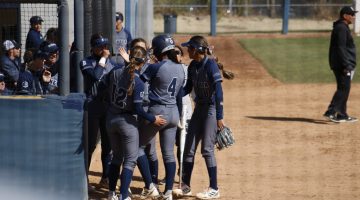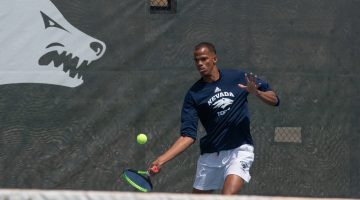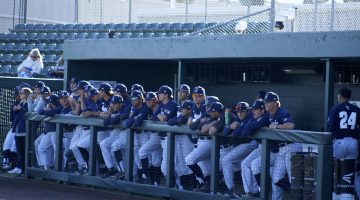by Eric Uribe
There are a lot of numbers to take away from Cody Fajardo’s weekend at the NFL Scouting Combine.
The big one is 4.63 — Fajardo’s 40-yard dash time. The mark tied for third best among quarterbacks, behind only Oregon’s Marcus Mariota and Alabama’s Blake Sims. By comparison, Fajardo’s 40-yard time was short of Colin Kaepernick’s 4.53 mark back in 2011.
Then there’s 4.10, Fajardo’s time for the 20-yard shuttle, which was the second-fastest among quarterbacks. Only UCLA’s Brett Hundley, who trained alongside Fajardo for the combine in Southern California, clocked a better time than Fajardo.
Here are a few more numbers: 6.95 in three-cone drill (fourth best), 32.5 inches in vertical jump (sixth best) and 118 inches in broad jump (fifth best). No quarterback participated in the 60-yard shuttle or bench press (we’ll never know how many times Fajardo can bench 225 pounds, sigh).
However, the number that really stands out is one. That figure represents the number of Wolf Pack players that received a coveted invite to Indianapolis, Indiana for the combine, which is the mecca of pre-NFL Draft events.
Ex-Nevada players with NFL potential such as defensive end Brock Hekking, cornerback Charles Garrett and offensive lineman Kyle Roberts were snubbed out of the combine, justifiably or not. The likelihood of lasting in the NFL, much less being drafted, is almost shot without appearing at the combine in front of hundreds of NFL personnel across all 32 teams.
The number of Wolf Pack players represented at the combine has dwindled since 2011 when four players (Kaepernick, Virgil Green, Dontay Moch and Vai Taua) were invited.
In 2012, the number of Nevada invites peaked at five players (Rishard Matthews, Mike Ball, James-Michael Johnson, Brandon Marshall and Brett Roy).
Since then, invitations for Nevada alums have been on a sharp decline with four in 2013 (Duke Williams, Khalid Wooten, Stefphon Jefferson and Chris Barker) and one last year (Joel Bitonio).
The scariest part? The Wolf Pack’s streak of sending players to the combine might be over next season. The only player who has a chance right now seems like defensive end Ian Seau, but he’s far from a shoe-in.
Heck, scanning down Nevada’s entire roster, few names scream NFL potential, sans wide receiver Hasaan Henderson.
It may sound silly to say, but for mid-majors, there’s a direct correlation with yearly success and how many of their players reach the NFL.
During that three-year golden stretch of 2011 to 2013, few mid-major programs were as well represented at the NFL Combine as the Wolf Pack.
So what happened?
The only explanation I can muster is coaching. Look, Nevada isn’t a school four- and five-star high school prospects are going to flock to anytime soon. That’s not to say those prospects can play football better, but they have more size and athleticism needed to make it in the NFL.
With the Wolf Pack, developing talent is everything. Ex-head coach Chris Ault proved he could coach up raw talents and turn them into gems. It’s too early to say if Brian Polian can or can’t do the same, but early indications aren’t looking too good.
When Ault retired, how much did established players like Fajardo, Hekking, Lenny Jones or Richy Turner improve? Marginally, and their improvements can be linked to their natural maturation.
Can Polian maximize the talent level of his team? Keep in mind the number of Nevada players at the combine in the next few years to answer that question.
Eric Uribe can be reached at euribe@sagebrush.unr.edu and on Twitter @Uribe_Eric.












